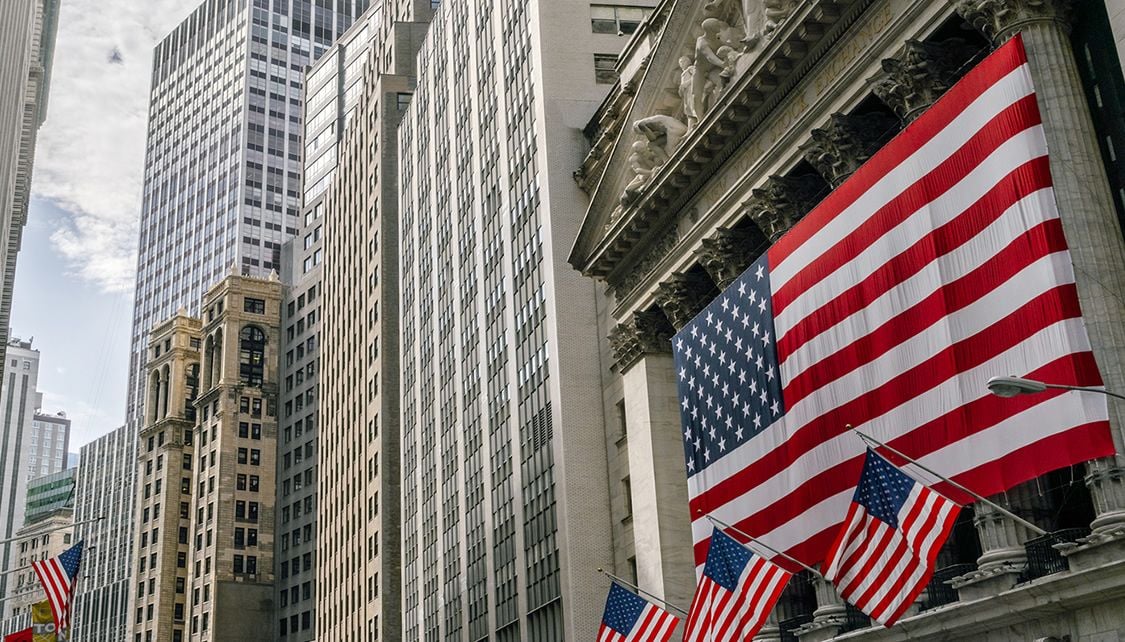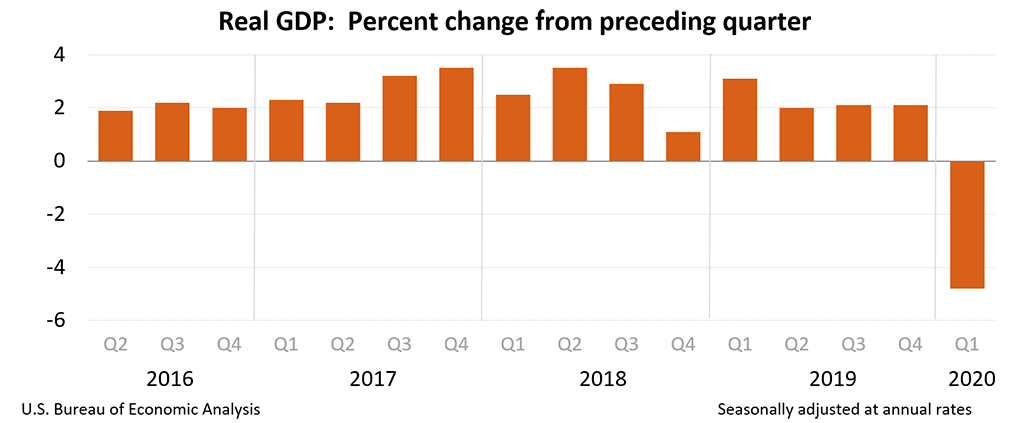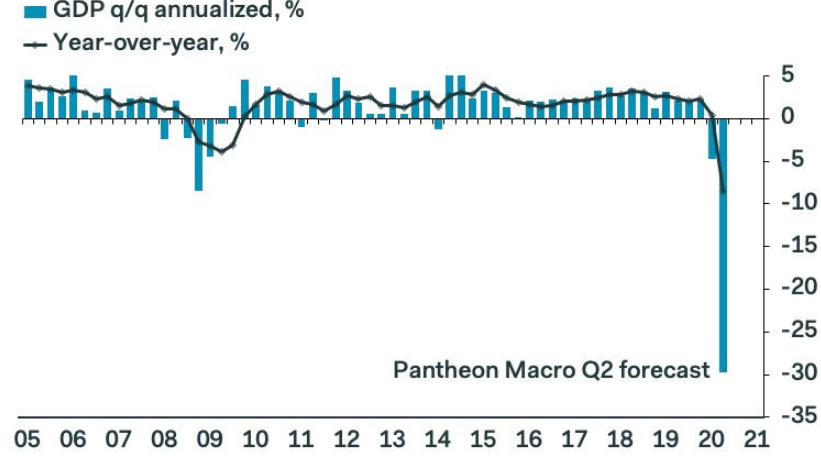U.S. Economy: -4.8% First-quarter GDP Contraction Spells Trouble for Rest of the World's Economy
- Written by: James Skinner
- First-quarter U.S. GDP slumps -4.8% in largest fall since 2008.
- Even more intense inferno awaits in Q2 with fall of up to -40%.
- Recovery from coronavirus will be slower than the destruction.
- Data spells trouble for rest of world ahead of Eurozone figures.

Image © Adobe Images
- GBP/USD spot at time of writing: 1.2463
- Bank transfer rates (indicative): 1.2134-1.2221
- FX specialist rates (indicative): 1.2283-1.2358 >> More information
The U.S. economy experienced a near historic contraction at the hands of the coronavirus in the first-quarter, with gross domestic product falling further than markets had anticipated and potentially pointing to trouble ahead for the rest of world economy just a day before Eurozone figures are released.
First quarter GDP fell by -4.8% in a period that is typically weak due to 'seasonal factors,' a decline that surpassed even the downgraded consensus for a -4% fall. This is a deterioration of fortune for an economy that grew by a steady annualised pace of 2.1% in the final quarter of 2019.
"The decline in first quarter GDP was, in part, due to the response to the spread of COVID-19, as governments issued “stay-at-home” orders in March. This led to rapid changes in demand, as businesses and schools switched to remote work or canceled operations, and consumers canceled, restricted, or redirected their spending," says the Bureau of Economic Analysis.
Above: Bureau of Economic Analysis graph showing quarterly changes in U.S. GDP at annualised rates.
Collapsing 'personal consumption expenditures' were the main driver of the contraction, although nonresidential fixed asset investments, exports and changes in inventories among companies were also among the contributors to declines. These were partly offset by increases in residential fixed asset investment and government spending as well as a reduction of imports, which are a subtraction in the calculation of GDP.
Falls in health and health goods as well as motor vehicles and parts were all in the frame for declines in personal consumption expenditures. This was a quarter that saw only a few weeks worth of disruption and destruction as a result of the coronavirus that's thought to have escaped China's borders in January. Economists say the second quarter could see the economy go up in an even more intense inferno given 'lockdown' measures were widespread through April.
"Thus ended the expansion which began in the third quarter of 2009; killed by Covid-19. But these data capture only the squall before the second quarter hurricane, so it’s not going to change anyone’s mind on the future trajectory of the economy," says Ian Shepherdson, chief economist at Pantheon Macroeconomics. "The chart shows that the drop in Q1 GDP brings the cycle to an end, but its nothing compared to our expectation for Q2."
Above: Pantheon Macroeconomics graph showing quarterly changes in U.S. GDP at annualised rates and Q2 forecast.
"The steep drop in economic activity in the US in the first quarter is just a fraction of the losses that will be seen next quarter, reflecting stricter social distancing and an expected unprecedented rise in the unemployment rate," says Katherine Judge, an economist at CIBC Capital Markets.
Judge says that even once social distancing measures are relaxed consumer demand will be "weak" and the U.S. economic recovery feeble because the unemployment rate will fall only slowly from what many say will be historic highs that surpass even those seen in the great depression. Business investment will also be limited by spare capacity in the economy.
It will take longer for economies to recover than it did for the coronavirus to destroy them. ING says the contraction over two quarters in 2020 will be greater than the GDP loss seen over three years in the wake of World War II, the end of which produced an industrial downturn.
"A combination of Covid-19 containment measures and consumer fear meant activity collapsed in March. With lockdowns likely to remain largely in place until mid-May and social distancing set to continue well beyond that, we forecast that the economy will contract at a 40% annualised rate in 2Q," warns James Knightley, chief international economist at ING.
Above: ING Group graph depicting history of U.S. economic contractions. Q2 forecast implies largest GDP fall on record.
The U.S. data was released just a day ahead of first quarter figures for the Eurozone, which was weaker to begin with, quicker to contract the coronavirus and has spent longer under the draconian kinds of 'lockdown' inspired by China's response to the pneumonia inducing disease.
Consensus looks for only a -3.7% contraction from a Eurozone economy that was growing at less than half the pace of the U.S. in the final quarter of 2019, when the bloc saw GDP rise at an annualised pace of just 1%. This is a curious expectation given that Italy and other major European economies have been battling the coronavirus under lockdown for longer than the U.S. economy.
"The Eurozone data could be even worse and the US data less bad than that, according to our economics team. I'm wary of the euro under the circumstances. I'd rather buy it at higher levels, next week after the data and month-end, than chase it here. Indeed, I'm still happy to be short EUR/JPY for now. Away from that, the big theme for me is still the increasingly clear divergence between developed and emerging markets - something we think will persist," says Kit Juckes, chief FX strategist at Societe Generale.






